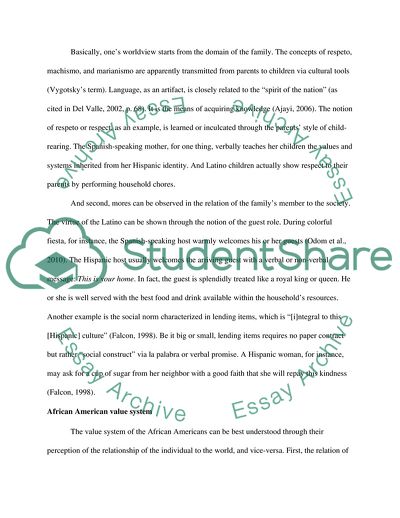Cite this document
(Hispanics and African Americans - Mores and Value System Research Paper, n.d.)
Hispanics and African Americans - Mores and Value System Research Paper. https://studentshare.org/culture/1741876-lifestylesvaluesmores-and-other-characteristics-of-hispanic-and-african-american-cultures-living-in-alabama
Hispanics and African Americans - Mores and Value System Research Paper. https://studentshare.org/culture/1741876-lifestylesvaluesmores-and-other-characteristics-of-hispanic-and-african-american-cultures-living-in-alabama
(Hispanics and African Americans - Mores and Value System Research Paper)
Hispanics and African Americans - Mores and Value System Research Paper. https://studentshare.org/culture/1741876-lifestylesvaluesmores-and-other-characteristics-of-hispanic-and-african-american-cultures-living-in-alabama.
Hispanics and African Americans - Mores and Value System Research Paper. https://studentshare.org/culture/1741876-lifestylesvaluesmores-and-other-characteristics-of-hispanic-and-african-american-cultures-living-in-alabama.
“Hispanics and African Americans - Mores and Value System Research Paper”. https://studentshare.org/culture/1741876-lifestylesvaluesmores-and-other-characteristics-of-hispanic-and-african-american-cultures-living-in-alabama.


